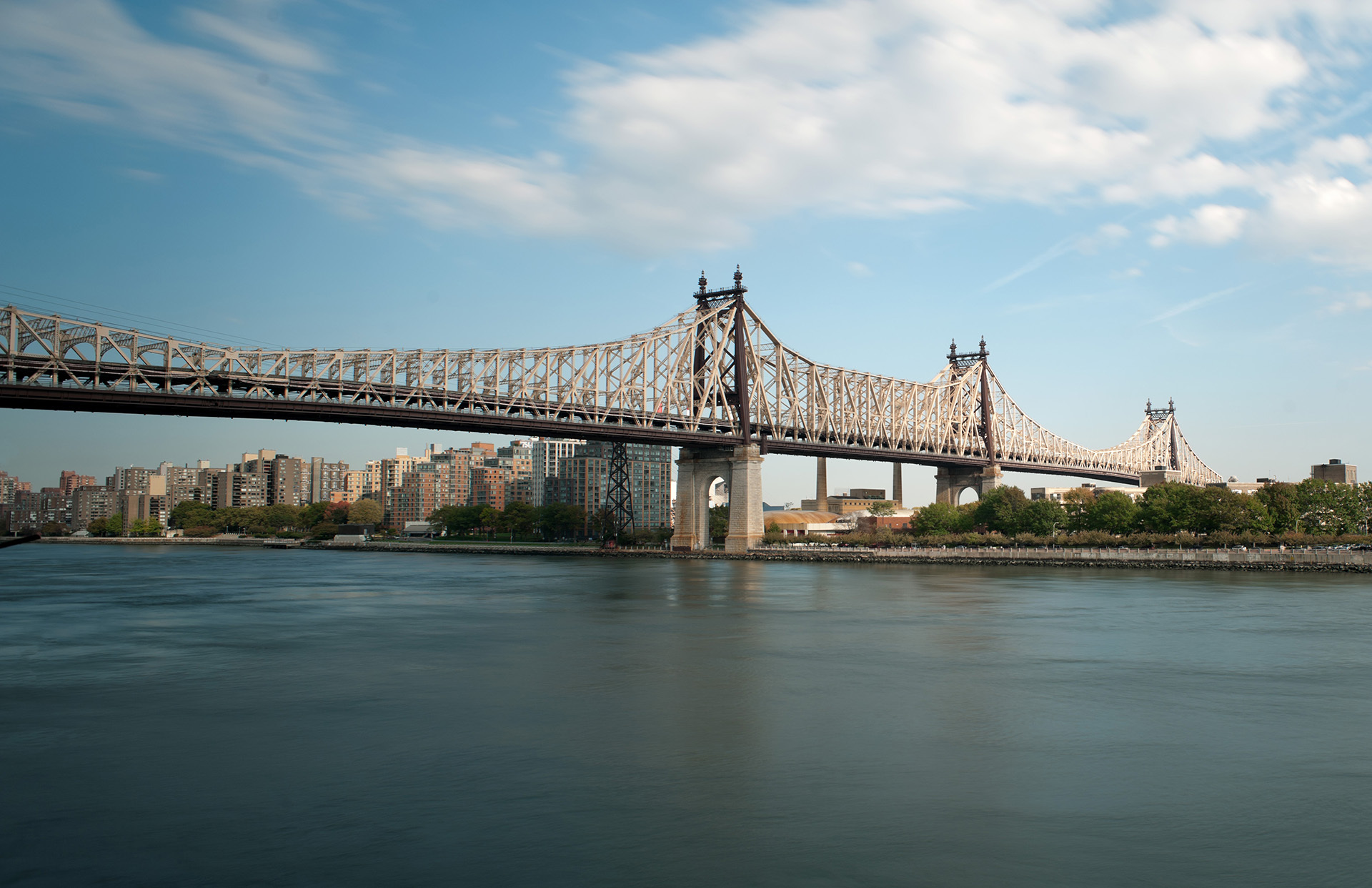Queensboro Bridge
Then
The Long Island Bridge Company was formed in 1867 out of influential citizens of Long Island City who wanted easier access to Manhattan; the bridge proposed would be called the Blackwell’s Island Bridge (Roosevelt Island was previously named Blackwell’s Island and Welfare Island). The first plan was submitted in 1868 by C.A. Trowbridge; it called for two wrought iron cantilever spans and connected 77th Street in Manhattan and 34th Avenue in Queens. Dr. Thomas Rainey took over promoting the bridge after the first plan stalled and came up with his own plans. R.S. Buck submitted a design for two cantilevers of different lengths in 1899, and it was approved in 1901.
Engineer Gustav Lindenthal became the city’s Bridge Commissioner in 1902 and was not pleased with its design. He altered the plans, making the bridge 80 feet wide (from 120), added a second deck and elevators, and hired Henry Hornbostel to design many of the bridge’s details.

Queensboro Bridge, 2010
Now
Some changes were made to the bridge before it was even completed. On August 29, 1907, the Quebec Bridge, another high-profile cantilever bridge, collapsed due to inadequate engineering and the use of substandard steel. The collapse called the design of the Queensboro into question, and steel unnecessary to the structure was removed.
The bridge opened to traffic on March 30, 1909 and official ceremonies were held on July 12 of the same year. In September, the Queensborough Bridge Railway started running trolley service across the outer lanes of the bridge. A railroad spur connecting the IRT Second Avenue Line with Queensboro Plaza used the upper level of the bridge beginning in 1917 up until a rail tunnel under the East River was opened in 1942. The trolley and rail tracks were removed and the bridge reconfigured for vehicular use; one of the trolley tracks is now the pedestrian and bicycle path. The bridge celebrated its centennial throughout May and June of 2009.